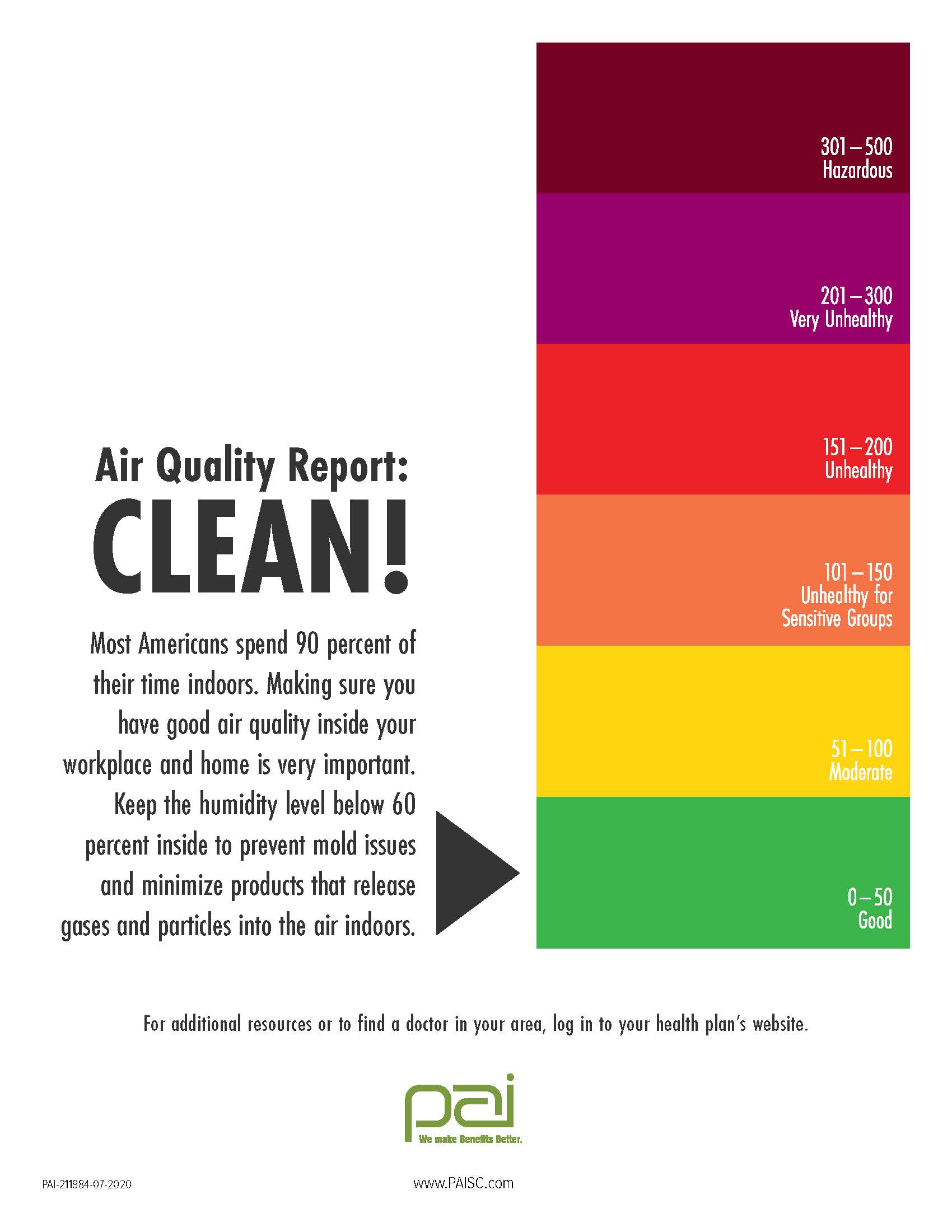Live Well
Air Quality Report: Clean!
There’s a clear way to make the air you breathe cleaner that will keep your lungs working at their best. Lungs are part of the respiratory system.  The respiratory system starts at the nasal cavity and ends at the diaphragm, right under the lungs. Respiratory health keeps you breathing easily. Thinking about cleaner air will keep your lungs and entire body healthier.
The respiratory system starts at the nasal cavity and ends at the diaphragm, right under the lungs. Respiratory health keeps you breathing easily. Thinking about cleaner air will keep your lungs and entire body healthier.
Thanks to smoke, dust and gases, even the air we breathe indoors at work and in our homes can be less clean than we think. Breathing in air pollution can irritate the airways. That causes asthma episodes, coughing, wheezing, shortness of breath and even chest pains. But you can take action to breathe better air.
What's in the air
Indoor air pollutants include things you may not even know about, such as radon gas. There are also dust particles, moisture that can grow into mold, and volatile organic compounds (VOCs). And don’t forget pesticides, bacteria and viruses — including COVID-19. The U.S. Environmental Protection Agency (EPA)* ranks poor indoor air quality in its top five health risks.
You can detect air pollutants by their odors. Other signs are dampness, “stale” air and stuffiness that make being in the house feel uncomfortable. You can’t detect all pollutants. Tiny droplets or particles in the air make up soot. Soot is mostly, if not completely, invisible to the human eye. This matter is most often a byproduct of wood smoke, power plant emissions or car exhaust. These particles can get into a house through open doors and windows. It can also come in through small cracks or from an HVAC unit without proper filtering.
Pollutants can come from cleaning products, air fresheners or “off gassing” from building materials. These can include newly installed flooring or carpet, or any new pressed wood furniture. The EPA notes that these things can release pollutants more or less continuously.
Many of the same problems that plague homes occur in workspaces. There are also a host of others, depending on the work environment. Workspace-specific air pollutants include harsh cleaning chemicals, fuel-burning combustion appliances and the effects of inadequate ventilation.
Problems that can arise from bad air
Poor air quality can affect more than just your lungs. Continued exposure to air pollution can increase your risk for heart attacks, stroke, lung cancer and even premature death according to the Respiratory Health Association*. Specific work-related illnesses, such as chronic obstructive pulmonary disease (COPD), silicosis and others, can crop up. To prevent them, workplaces must take proper steps to prevent workers from breathing in polluted air.
How to fix the air
There are many steps you can take at home to improve air quality.
The easiest is to switch out cleaning products and paints for low-VOC versions. Also, avoid using building materials, finishes and air fresheners that leech pollutants into the air. Replacing the air filters in your HVAC system also keeps the air clean and the system running efficiently.
You can use exhaust fans to move moisture and indoor air pollutants outdoors through a sealed and vented system. Another step is sealing the combustion around heating appliances and directing the exhaust outdoors through pipes. Finally, make sure there are no cracks or spaces for polluted outdoor air to enter your home. Check for cracks yourself or hire a professional to look around doors, windows, and other entrances and exits to your home.
It takes a lot of effort to keep lungs healthy. Keeping the air in your home cleaner will also help in small ways to keep all air a little cleaner. We can all be part of helping everyone breathe a little easier.
*The U.S. Environmental Protection Agency and the Respiratory Health Association are independent organizations that provide health information you may find useful.
